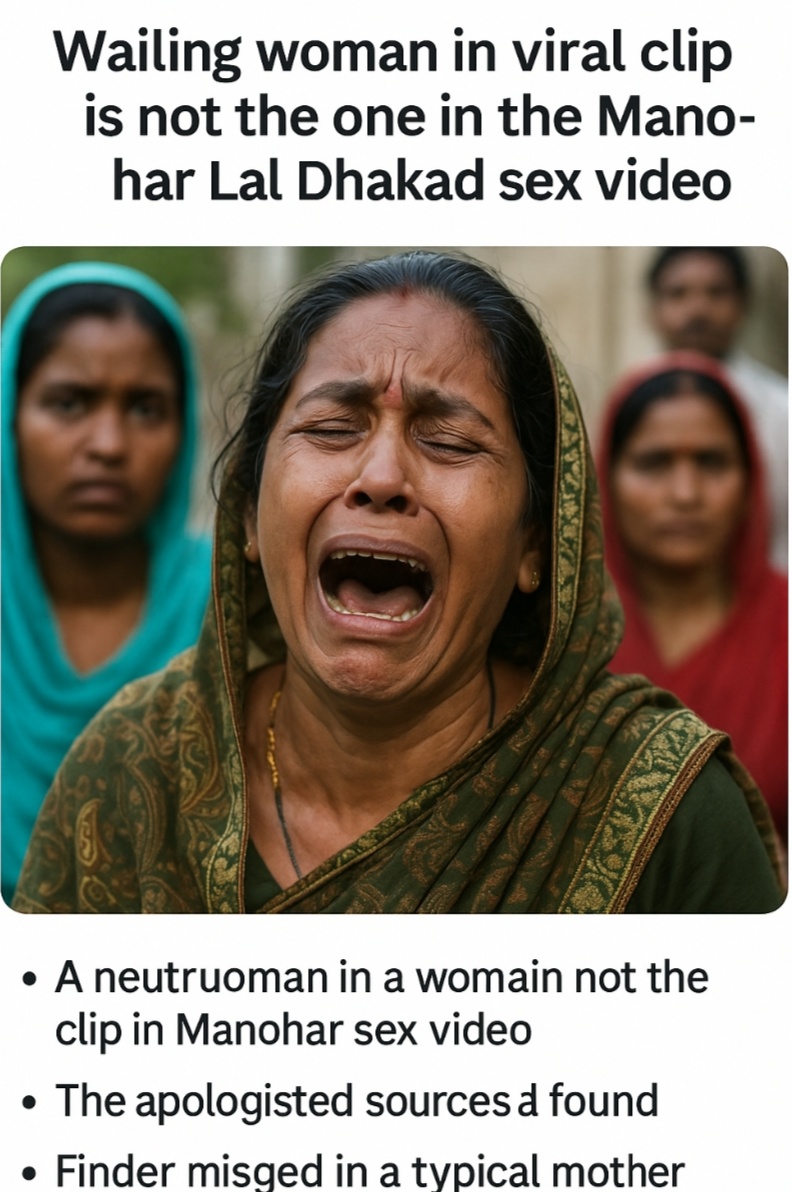Viral Wailing Woman Misidentified: She Is Not in the Manohar Lal Dhakad Sex Video
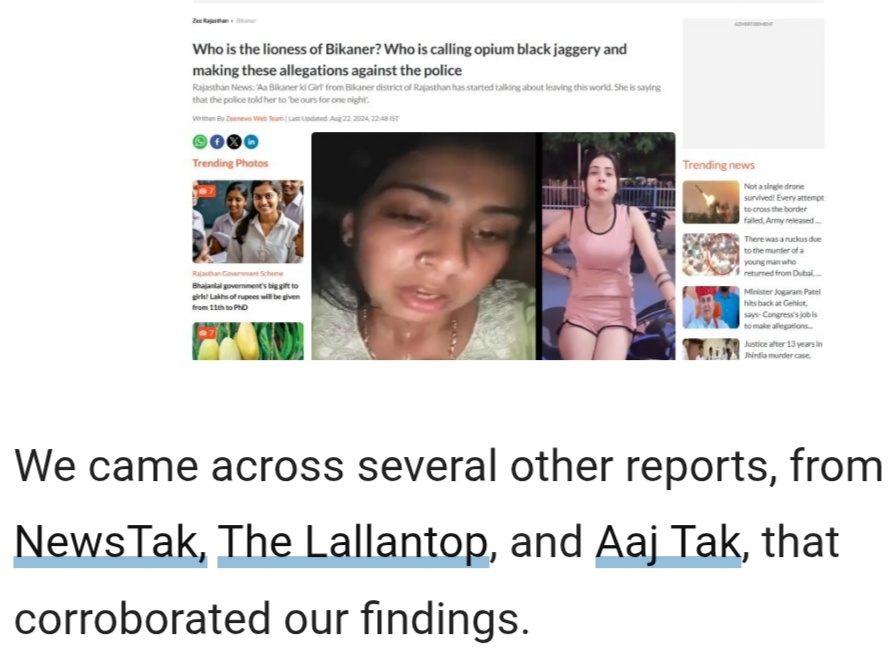
Introduction
In a whirlwind of misinformation, a viral video featuring a wailing woman was wrongly linked to the controversial Manohar Lal Dhakad sex video. This misidentification sparked outrage, confusion, and an urgent call for clarification. Through proper fact-checking and responsible journalism, it has now been confirmed that the woman crying in the widely shared clip has no connection to the scandal
The Video That Went Viral
- A video surfaced online showing a middle-aged woman crying uncontrollably, surrounded by locals.
- Social media users wrongly claimed she was the woman involved in the Manohar Lal Dhakad sex tape, causing severe defamation.
- The video was shared across platforms without verification, triggering a storm of public opinion and judgment.
Who Is the Wailing Woman?
👠
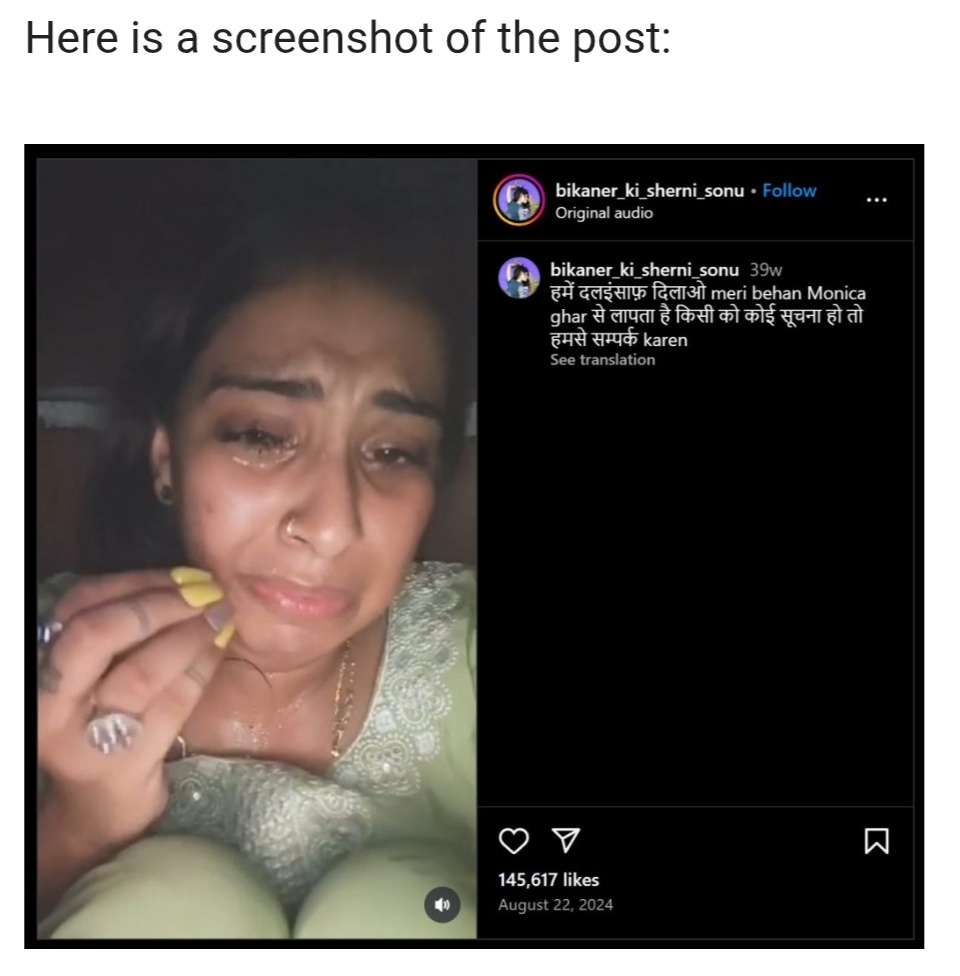
- Independent investigations have confirmed the woman is not related to Manohar Lal Dhakad in any way.
- She is reportedly a grieving mother mourning a family tragedy, entirely unrelated to the viral sex video.
- Her identity and privacy were violated due to reckless sharing and misreporting.
Fact-Checkers Step In
- Multiple Indian fact-checking platforms, including Alt News and BOOM, conducted digital forensics on the video.
- They traced the original upload, verified its context, and debunked the false narrative.
- The woman’s real situation was revealed — she was mourning a personal loss, not involved in any scandal.
Role of Social Media Misinformation
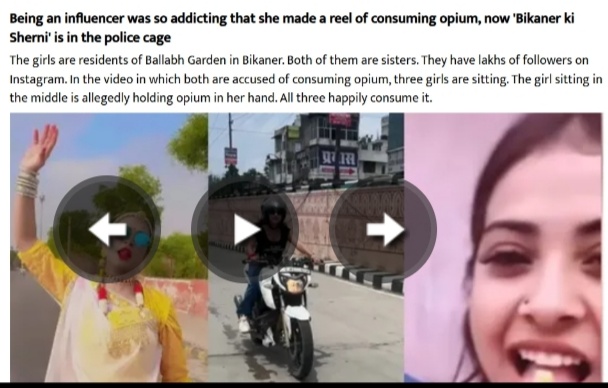
- Platforms like WhatsApp, Twitter (X), and Facebook played a major role in spreading the false link.
- Influencers and political accounts used the video to discredit opponents, without caring about the truth.
- Such behavior reflects the dangers of unverified viral content in an age of digital manipulation.
Impact on the Woman and Her Family
- The misidentification has led to public humiliation and emotional trauma for the woman and her family.
- She faced unwanted media attention, online harassment, and stigmatization in her locality.
- Legal experts suggest she may have grounds to file a defamation lawsuit against those who spread the false claims.
Legal and Ethical Implications

- India’s IT Act and recent digital media guidelines prohibit the distribution of fake news and misleading media content.
- Legal action is expected against the first uploader of the false video claim.
- Ethical journalism demands double-checking facts before publishing, especially in sensitive matters involving individuals’ identities.
Public Reactions and Apologies
- Several public figures and pages have issued apologies for circulating the incorrect information.
- Netizens who amplified the video expressed remorse, though the damage was already done.
- Advocacy groups are demanding stronger digital literacy campaigns to prevent such incidents.
What Really Happened in the Manohar Lal Dhakad Sex Scandal?
- A separate video involving Manohar Lal Dhakad, a political figure, was leaked, showing him in compromising situations.
- The woman in that video has since been identified and has no resemblance to the crying woman in the unrelated clip.
- Linking the two was baseless and defamatory, as clarified by authorities and media outlets.
The Need for Responsible Sharing
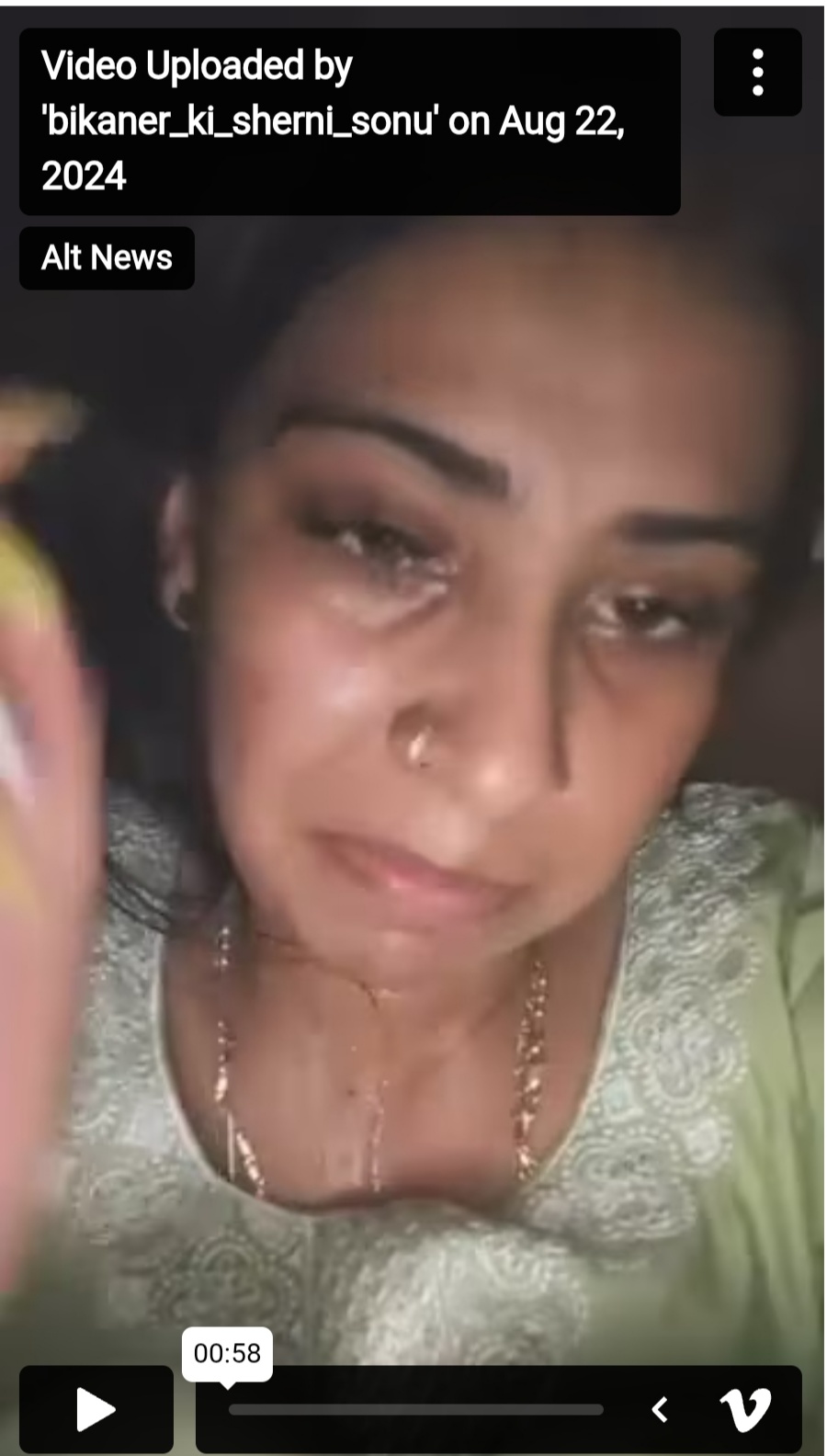
Before You Share:
- Verify the source of the video or image.
- Check context using fact-checking platforms.
- Avoid jumping to conclusions based on appearances.
Bullet Points Summary
- The wailing woman in viral video has no link to Manohar Lal Dhakad.
- She was misidentified, causing her and her family deep distress.
- Fact-checking platforms have clarified her unrelated situation.
- The woman was grieving a personal tragedy, not involved in a sex video.
- The video became a tool for misinformation and political agendas.
- Public figures and pages have started apologizing for spreading fake news.
- The actual woman in the Dhakad video has been separately identified.
- The incident highlights the need for media ethics and digital literacy.
Expert Opinions
“This is a tragic example of digital defamation. Sharing unverified content can destroy lives,” said media ethicist Dr. A. Raman.
“We urge citizens to use fact-checking tools before reposting emotional or controversial content,” stated BOOM editor Nina Arora.
Key Takeaways
- Always verify content before sharing.
- Misidentification can lead to legal consequences.
- Digital misinformation is a growing threat to social trust.
- Journalists must adhere to strict verification protocols.
- Victims of false labeling deserve justice and public correction.
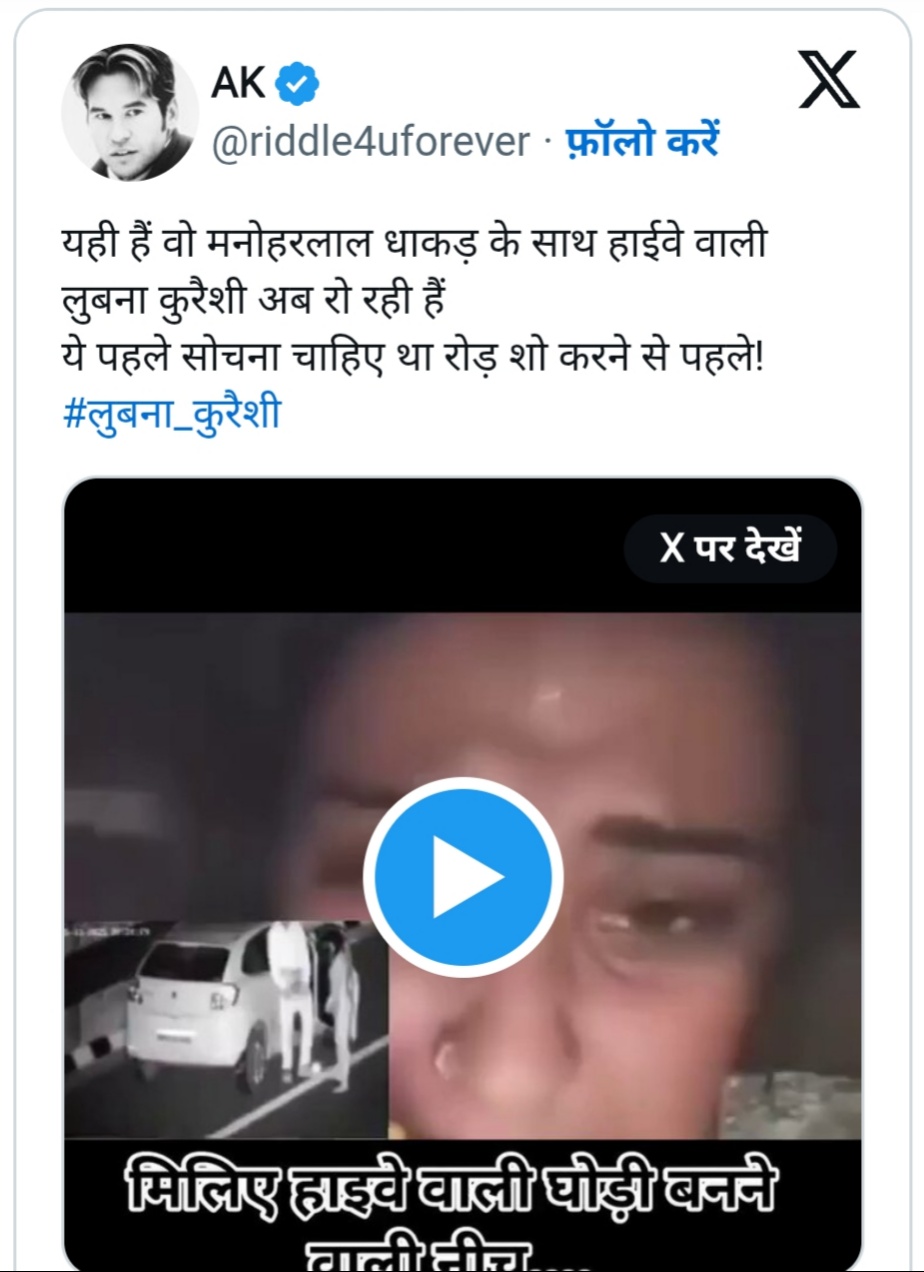
Conclusion
The case of the misidentified wailing woman underlines the dangers of viral misinformation. In the race for clicks and shares, the truth often gets buried — leaving behind real people who suffer the consequences. As responsible netizens and media consumers, we must pause, verify, and think before forwarding any content. This is not just about protecting others — it’s about protecting truth itself.

